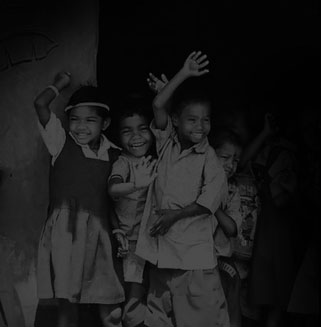My first glimpse of Machia village was when I got off the vehicle after a 6 hour drive from Bhubaneswar. The village was dark, lit only by the expansive, absolutely stunning display of star studded skies and a rather jarring sprinkling of a few incandescent bulbs. A small gathering of weary villagers awaited our arrival. This was a community of traditional weavers who had not been able to hold on to their traditional skills. The reasons were manifold and available for inquiry, however at this point of time the reality was that there were distinctly three categories of villagers. One totally disilluisioned with traditional weaving and who had opted out to work as manual labourers locally or as migrant workers in other cities, the second category who were partly engaged in weaving related activities and but also laboring in others farmlands to make their ends meet, and the third set who were holding on to their legacy despite societal pressures and the sheer unviability of the current business model.
It was the third set that I was keen on meeting. The looms had been set up at the rear end of the house of one of the few weavers left. They stood resplendent and magnificent amongst the spartan settings with barely enough light and ventilation. However, the undisguised pride of the weaver in the weaves he had created and the sheer intricacy and complexity of the weaves over rid every element of doubt that had sneakingly crept into my mind as I had entered the village. The weaves were breathtaking and the craftsmanship exquisite. This was the first time that I was filled with energy and optimism and it validated everything that we were planning to do. The first ray of possibility and the opportunity this mission had almost dizzyingly reverberated in my mind. We examined every piece of weave and pattern that we could lay our hands on during those crucial interactions with the weaver family. The plan for revival had passed its first crucial test. The rest of the interactions would only be about understanding and determining the inclination of the weavers to re-commence what was in the past a painful journey. In lieu of the support that would come their way, how willing were they to revive a part of their legacy of weaves! In their willingness alone lay the roadmap of Mauna Dhwani’s mission.
It was crucial at this stage itself to let the villagers know that we would only be the catalysts. The revival lay in their hands and the manner in which they took a lead, involved critical stakeholders and created their own movement, would determine the success and impact of the project. Though there was a sense of dignity and pride in being a weaver amongst the older generation, the need to enlist more of the younger generation was a mental note that we made as we continued our conversations. The first set of responses were encouraging and we noted down the number of families who had indicated their intent and keenness to enroll for the pilot.
The evening came to an end. And as I was walking towards the car on that dark night, on an unleveled village road, amongst small immaculately clean mud houses with dung smeared courtyards, I think I smiled to myself. Social impact must surely be ‘a science of hope’…. and here in begins my journey to explore a methodical action-oriented collaborative science that has outcomes far reaching… but none more powerful than hope…




